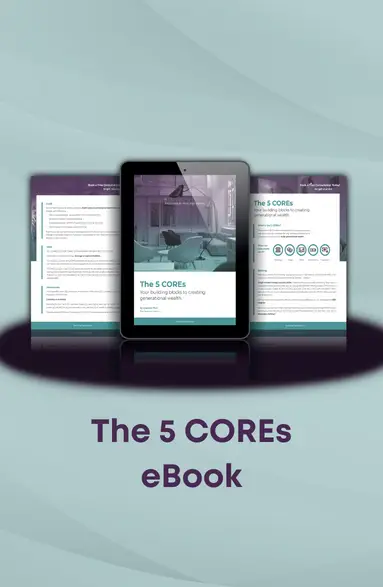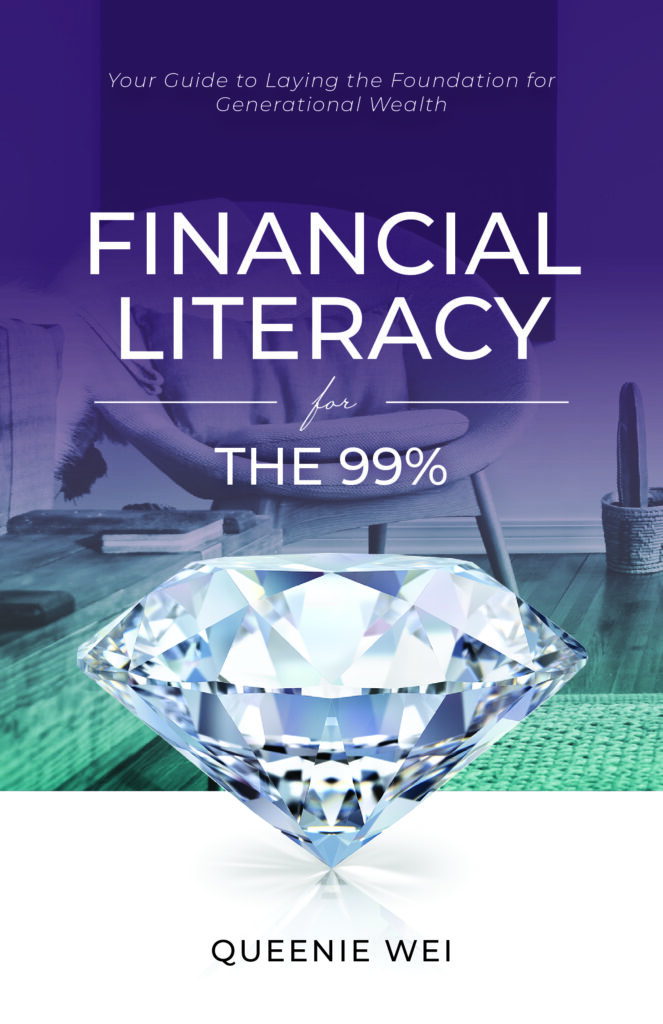Whether you’re an entrepreneur or a working professional in your 9-5, something that should at least have crossed your mind, is what’s called an exit number.
For entrepreneurs, that’s the number you need that will allow you to “step away” from or sell the business. As a working professional, this is your retirement number. (As in exit the workforce, get it? Okay, I’m working on those mom jokes…)
Most of us don’t start a job or a business and think about the end in mind. But as we’ve seen with financial wealth, you need to paint a clear picture of where you’re going or you’ll never get there.
Most entrepreneurs work themselves into a job, they leave their 9-5 so they can work 6AM – 10PM (which isn’t exactly healthy….) What you want is to have an objective to know WHAT you’re working for and what that number looks like.
One of the most stress relieving moments of 2020 is when we calculated our retirement number. For some reason, I thought it was going to be this astronomical thing that I had to work my ass off for in a never-ending cycle.
Silly, I know. But hey, we live and we learn.
The relief I felt in actually seeing what that number was shifted my entire perspective. I knew with the foundations I had laid in place for my family, we were set. To my amazement, it was actually a lot less than what I had thought.
Retirement was always a foreign term for me (I’m 27, so my thought process was, why do I even need to think about this?) BUT what I learned was that there is beauty and relief in 𝐂𝐋𝐀𝐑𝐈𝐓𝐘. I needed the clarity before I could focus and put my actions to work.
This is why we start with clarity and knowing the exact number for our financial goals.
Want the framework I used to do this?
Read on.
What Is Your Retirement Number?

The 4% rule. Allow me to introduce this simplest way to calculate what your retirement number is. Oh, and this is my favourite because you can easily do the math and swap the numbers out if you start raking in those investments!
The 4% rule is based on the Modern Portfolio Theory. You might have heard that investment advisors and mutual funds generally can’t beat the long term growth of an ETF (exchange-traded fund) because the “market” will always beat individual company stocks. While my personal belief differs, we’ll go with this for the sake of this blog post and calculating our retirement number.
So your average yearly return on investment in an ETF is roughly 8-10% per year, year over year. What this means is, if you pull out 4% per year and use it as your retirement income, you’ll still have your money working for you WITHOUT losing it to inflation.So here’s the math breakdown:
- Step 1: Start with tracking your expenses and income (if you need it, here’s a deeper breakdown and why it’s important to do so…)
- Step 2: Figure out your ideal monthly income (not what you’re currently making but how much you’d be comfortable with per month BE REALISTIC! When we first did this for ourselves I thought we needed 50K/months, but I realized we actually live an incredibly ideal life for ourselves with 15K-20K/month)
- Step 3: Multiply your monthly income by 12
- Step 4: Divide that number by 4%
Now if you feel MORE comfortable doubling that income amount, you’re obviously welcome to – we actually tripled it for ourselves.
Ready for the fun part?
Where To Invest Retirement Money?

This is a loaded question and I want to be clear: I’m NOT your financial advisor. These are my opinions and my opinions only (for legal reasons). Don’t go cancel culture on me, lol.
One method we’ve already talked about is through ETF (index funds). They’re a low risk investment that you don’t have to manage. It’s basically having your money work for you. Now you’ll get about 8-10% returns, sure – but it still requires you to SAVE and put money away up front.
Leveraging insurance policies is another great way to invest in retirement. Google “The Infinite Banking Concept” or reach out to me and I’ll set you up with a trusted expert in this field. A big part of this is “hedging”, which we’ll talk about in a later post.
In Canada we have RRSP and TFSAs. My rule is max out your TFSA first and THEN move onto your RRSP. Why? Because it’s more tax advantageous to you that way.
For our US friends, you’re going to make friends with your ROTH IRA, and not just whatever your employer is matching.
There are many paths to wealth, my tribe, and if you want a more in depth conversation about this, book a time with me here and let’s see what we can do to get you set up where YOU feel comfortable and have an action plan in place to start today!
How To Plan?

This thing we call inflation lowers the value of our hard-earned dollar year after year. The way to beat it is by sheltering your assets. Meaning, protect them from inflation which eats away at your money. So a couple of things is to look at how you want to retire.
Will you be owning a house? What are the expenses that you’d anticipate during your retirement? Remember to give yourself LOTS and LOTS of buffer, because why not live a little right?
The key here is to list out all the possible expenses that you might encounter. Remember to add “health bills” to that and vacation. Then divide everything by 5%. This would be safe enough for the adjusted inflation per year.
At the time of this blog, the inflation in the US went up 1.62% from 2020 to 2021… it might look like a lot but this continues year after year… so your $1,000 savings from 2000, is roughly around $784.90 if we go with an average inflation rate which is approximately 1.97%. This means your savings lost over $200+ dollars in value, and if you have more in your savings….. the more you lose.
And my fellow Canadians, this is where you’re at…. We’re up 0.65% from last year.
But anyways, back to the plan. Now that you have your expenses, with the adjusted inflation price tag added to those numbers we can go back to our visual example:
Let’s say I have 20 years before I officially retire and I need $3,000,000 to do so comfortably.That means I need:
- $150,000/year
- $12,500/month
In order for me to make that number to retire with $10,000/month.
It’s a LOT of money to save with your current living expenses though, isn’t it?
If You’re Still Feeling Confused, You’re Not Alone.
It’s not something we’re taught in school so it’s not something that we tend to think about.
But I’m here for you, just like I am for my 99% Tribe. It’s a quick shift to start your journey, let me walk you through the exact process with our SVC Retirement Framework. It’s in video format so you can pause and follow along if needed.
Ready to paint a clear picture of your future?







